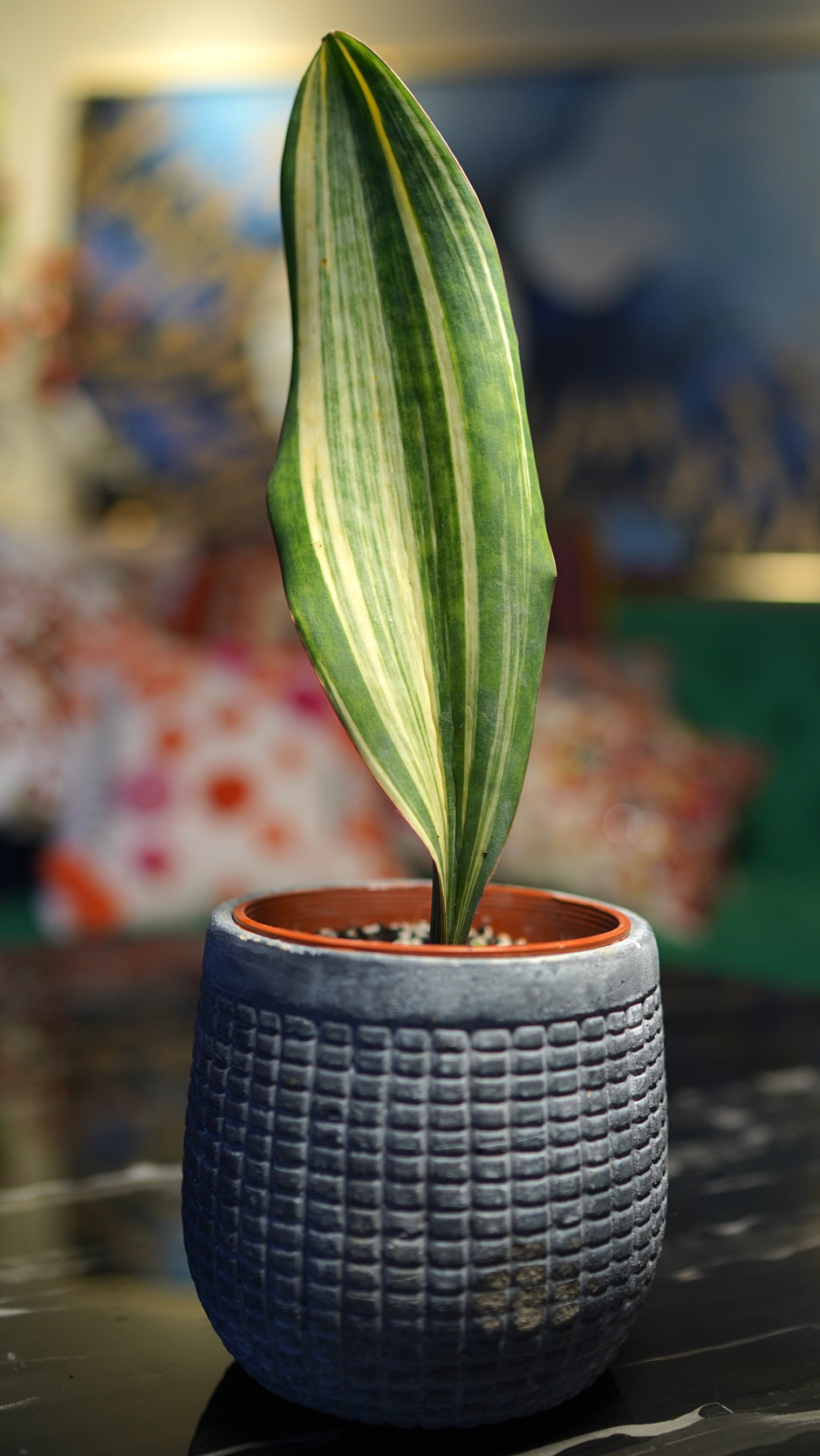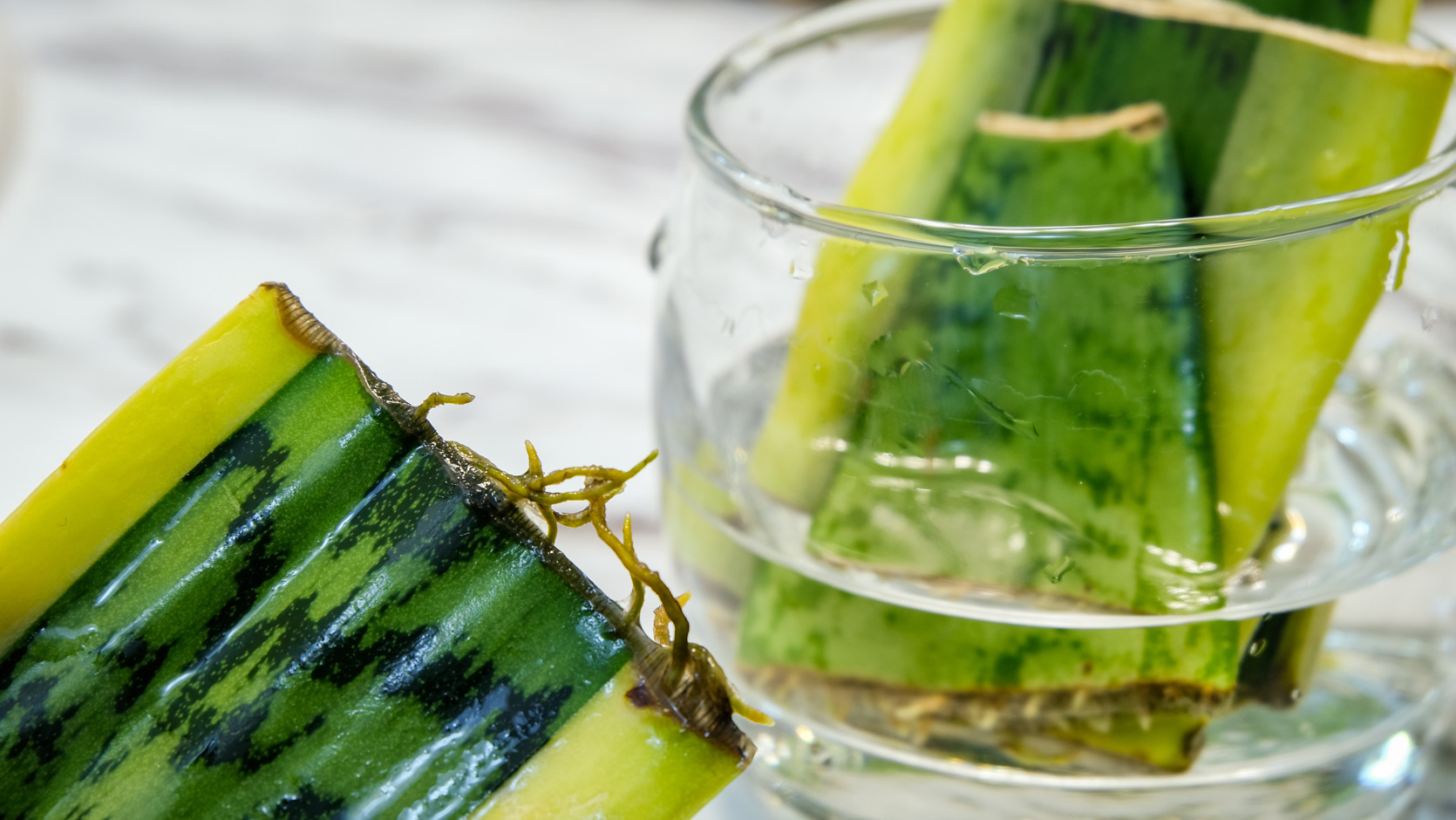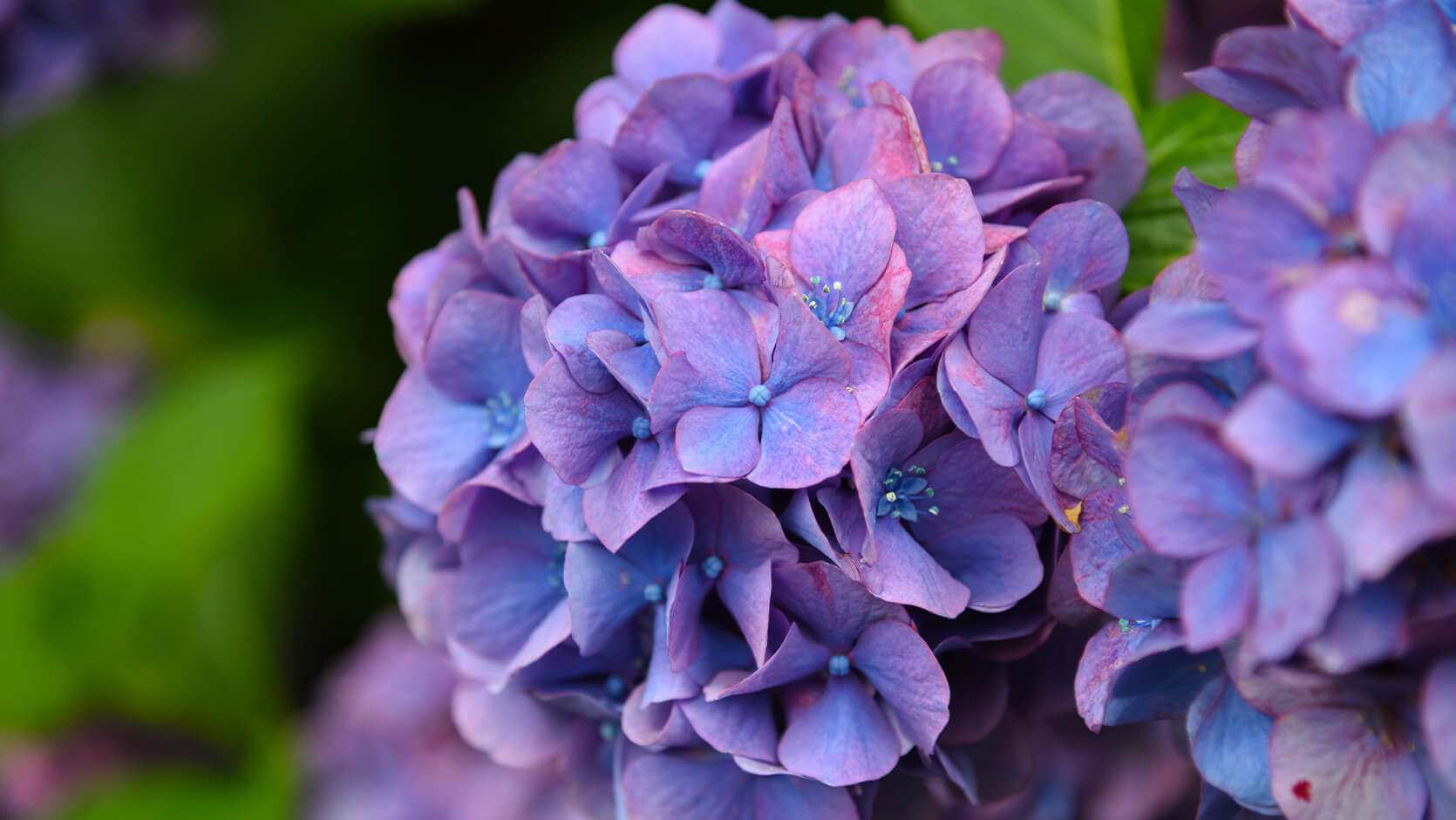Whale fin dracaena (Dracaena masoniana)
With its chubby, rounded, flipper of a leaf, the whale fin dracaena (Dracaena masoniana) is a cute complement to the tall, sword-like leaves of the snake plant or mother-in-law's tongue (Dracaena trifasciata) you might already have!
Native to dry, stony soils in the Democratic Republic of Congo, the whale fin dracaena usually sports the scale-like, dark green mottling that gives snake plants their name.
 Does this leaf remind you of a humpback whale fin, just breaching the ocean’s surface?
Does this leaf remind you of a humpback whale fin, just breaching the ocean’s surface?
The natural foliage patterning can be seen on the Gardens’ whale fin dracaenas in the Sun Pavilion and The Canyon, shown above, but we’re also enchanted by this unique, cream-striped, variegated form that we found in a specialty nursery (seen below).

An uncommon find, look for them online or in specialty nurseries and houseplant shops. Alternatively, ask another owner for a leaf or stem cutting. Let the cut end heal, then prop it in water or wet gravel, and check for roots in 1 to 2 weeks before potting in soil. If you prefer the single-leaf look, chop and propagate your plant as it grows and share these beauties with others!
| Botanical Name | Monstera adansonii |
|---|---|
| Common Name(s) | swiss cheese plant, swiss cheese vine |
| Plant Type | Climber or ground cover |
| Mature Size | 1 metre in height and 0.5 metres in spread (as a houseplant) 2 to 4 metres in height (in nature) |
| Light | Indirect light |
| Water | Let soil surface dry between periods of watering (ensure planter has drainage holes) |
| Soil | Well-draining soil |
| Flowers | Pale yellow spadix enveloped by white to cream-coloured spathes. Rarely flowers as a house plant. |
| Toxicity | All parts of plant contain calcium oxalate crystal – toxic when ingested. Poisonous to cats and dogs. |
Written by: Agatha Koh, Manager (Education, Programming & Events)
Agatha has spent the last ten years in a green paradise of every kind – greenhouses, orchards, food forests, therapeutic gardens, nature parks. Her days at the Gardens continue to be happily plant-filled as she shares her love for plants with fellow green thumbs and floral fanatics!



